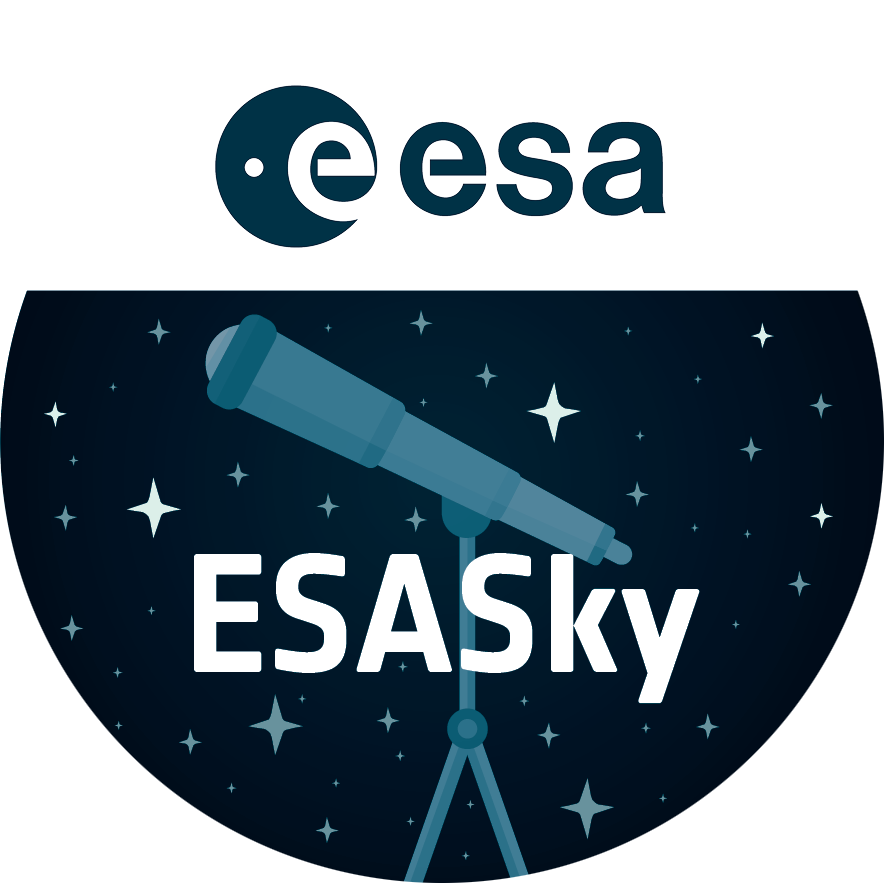ESASky User Forum / Whiteboard
Welcome to the ESASky user forum! The aim of this forum is to have a place to collect feature requests from users, allow conversations between users and gauge the Astronomy community's priorities related to the ESASky application. We welcome requests for the ESASky, its documentation, its ways of interacting with the community, and any functionality which you think would be widely useful to the Astronomy community.
Please suggest and vote on feature requests below. Before adding a new suggestion, use the search function to see if the idea has already been posted. Please include links to relevant repositories and existing issues in the description of the feature request. Also consider including links to code or images demonstrating the requested functionality.
You can also use this forum to report bugs or request small improvements to existing functionality.
Other places to get help and communicate with the ESASky team are:
- @ESAESDC on Twitter
- The ESASky newsletter
- The team's info email address (esaskyinfo at sciops.esa.int)
- The ESASky helpdesk (requires registration)
The ESASky Project is dedicated to maintaining a positive, inclusive, successful, and growing community. Please observe the usual basic internet citizen rules before posting to this forum.

 "Sources in chosen area" tag hides the selected source
"Sources in chosen area" tag hides the selected source
When having a catalog active and you update the FOV, the "Sources in chosen area" tag that displays the number of observations in the current area hides the catalog source that is currently selected with is a little annoying.

 orientation, scale and finding charts
orientation, scale and finding charts
I use EsaSky (among others) to prepare ground-based observations. At Phase II you can provided a finding chart for the resident astronomer to use. The usually ask for the N and E direction and the scale.
The scale could be ala Google maps in with you represent 1 arcdeg, 1 arcmin, 1 arcsec depending on the scale you have selected.
N and E directions should be particularly useful if a previous ticket, regarding FoV rotation and inversion is implemented.
The capability of generating a finding chart without menus, etc would be also extremely useful.

 URL shortener?
URL shortener?
The feature of having an URL is great, you copy Google maps here :-). It would be even greater if a shortener version (e.g. goo.gl) is provided

 GAIA DR2 epoch
GAIA DR2 epoch
GAIA DR2 coordinates epoch is 2015.5 which is the native one provided by GAIA. It would be useful to provide in more usual J2000.0 or at least in addition with 2015.5
The current form can be misleading. For example you could be preparing an observation and by error assume that the coordinates are in J2000.0, the error is substancial.

 Gaia DR2 catalogue does not show in big fields
Gaia DR2 catalogue does not show in big fields
If you go to sky.esa.int/?action=goto&target=246.80577685364196%20-24.517894672834654&hips=AllWISE%20color&fov=6.616839145259243&cooframe=J2000 and try to show the Gaia DR2 catalogue, the query never ends..

 Update the XMM-Newton MOCs
Update the XMM-Newton MOCs
A user is requesting XMM-Newton MOCs, as the ones provided for Chandra (http://cxc.harvard.edu/cda/cda_moc.html) it would be good to have them updated and easily accesible.
We could provide the fits files also from the XSA web page

 I cannot find source 3XMM J215022.4–055108
I cannot find source 3XMM J215022.4–055108
I cannot find source 3XMM J215022.4–055108, which is the topic of a recent nature paper about a black hole hosting stellar cluster: https://www.nature.com/articles/s41550-018-0493-1
Being this an XMM-Newton source probably from the 3XMM catalogue, shouldn't it be possible to find it directly by name in ESASky? I cannot find in SIMBAD nor in the XMM archive..

 Option to hide crosshair
Option to hide crosshair
Hi ESASky team,
I think it would be extremely useful to give the user the possibility to hide the central crosshair from the FOV. That would simplify a lot using RGB images from ESAsky.
Thank you very much,
Alejandro Borlaff

 Extend catalogue in-place filter to include < and > operators.
Extend catalogue in-place filter to include < and > operators.
The interface only supports string equality. Please add numerical comparison operators.

 Idea to extend ESASky capabilities
Idea to extend ESASky capabilities
I am playing around a little bit with Jupyter notebooks, and I was wondering whether would it be a good idea to implement something in python or any other programming languaje, that allows to send a request to ESASky in order to perform a crossmatch between a determined resultset, provided by the user, and the observations made by a specific science mission for that same area.
For example, imagine that I am a user that wants to perform a study about x-ray objects. I have a resulset produced by the data retrieved from XSA TAP service and reduced following a determined critera that will help me to find ... ????.
Now I want to cross my results with the observations made by Chandra mission, for that same area of interest, with a determined filtering, a specific background map and any other aditional flag like for example the publications available for the sources contained in that area, and finally, display those results in ESASky.
This would it be reasonable or useful from the user point of view?
Furthemore, that service could be useful for the rest of the archives. For example, going back to X-rays example. If a XSA user mades a filtering of data and now, from the XSA interface, we wants to cross those results with Chandra and display them in ESASky. Perhaps, could it be possible to send a json file to ESASky with all the information that it needs to do this and display the results in ESASky.
Does this make sense?
Customer support service by UserEcho




